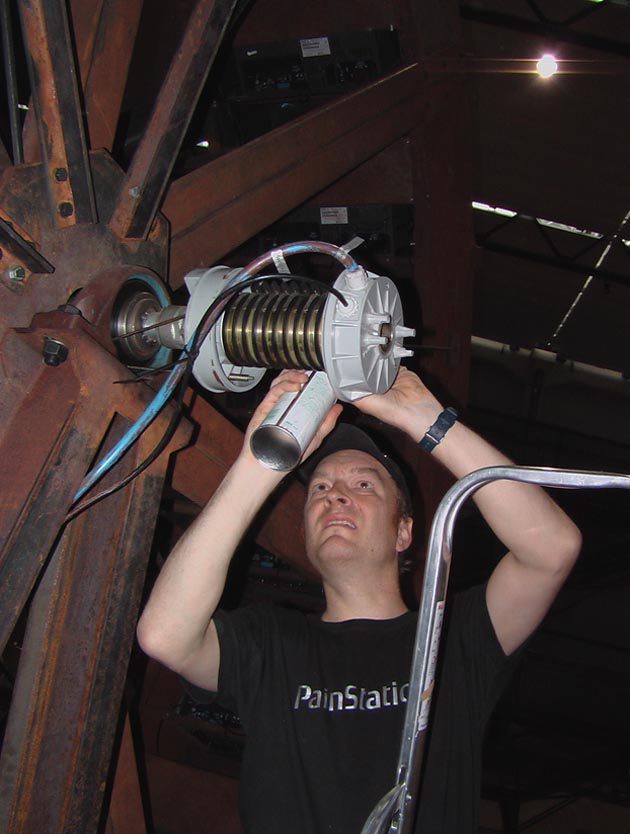 |
|
|
 |
|
Research questions
creator(s) Thomas Zirlewagen (conservator); Fenna Yola Tykwer (conservator)
The duration of the presentation – more than two years – brought to light numerous weak points in the construction as well as in individual technical components.
Interesting problems in terms of presentation in an exhibition but also of restoration and conservation emerged from the objects size and volume alone.
Problems arose, for example:
How could a technically complex work of many parts be documented thoroughly?
In the course of assembling the object, all of the technical data were recorded in words and photographs, supplemented by video recordings. Conveying the complex data by those means proved to be inadequate, however. For that reason, 3-D modeling was employed as an additional form of documentation.
The work posed numerous conservation problems:
- How does one deal with a sensitive rusted surface of more than 100 square meters in combination with 3,500 liters of water in a museum?
- How does one preserve circa 120 plug-in connections and 21 TV monitors within a spinning wheel for a long period?
- How does one ensure such an object continues to function daily?
Liquid Time II requires a comprehensive maintenance proposal that has to be planned and implemented with technical experts, conservators, and curators working together.
Based on experiences with the assembly in 2004, a comprehensive installation manual for the work was compiled. The greatest challenges for the installation and de-installation were in ensuring the safety of the artwork and the art handlers and the coordination of the complex logistics of the sequence of events.
 Copyright Protected Copyright Protected
|